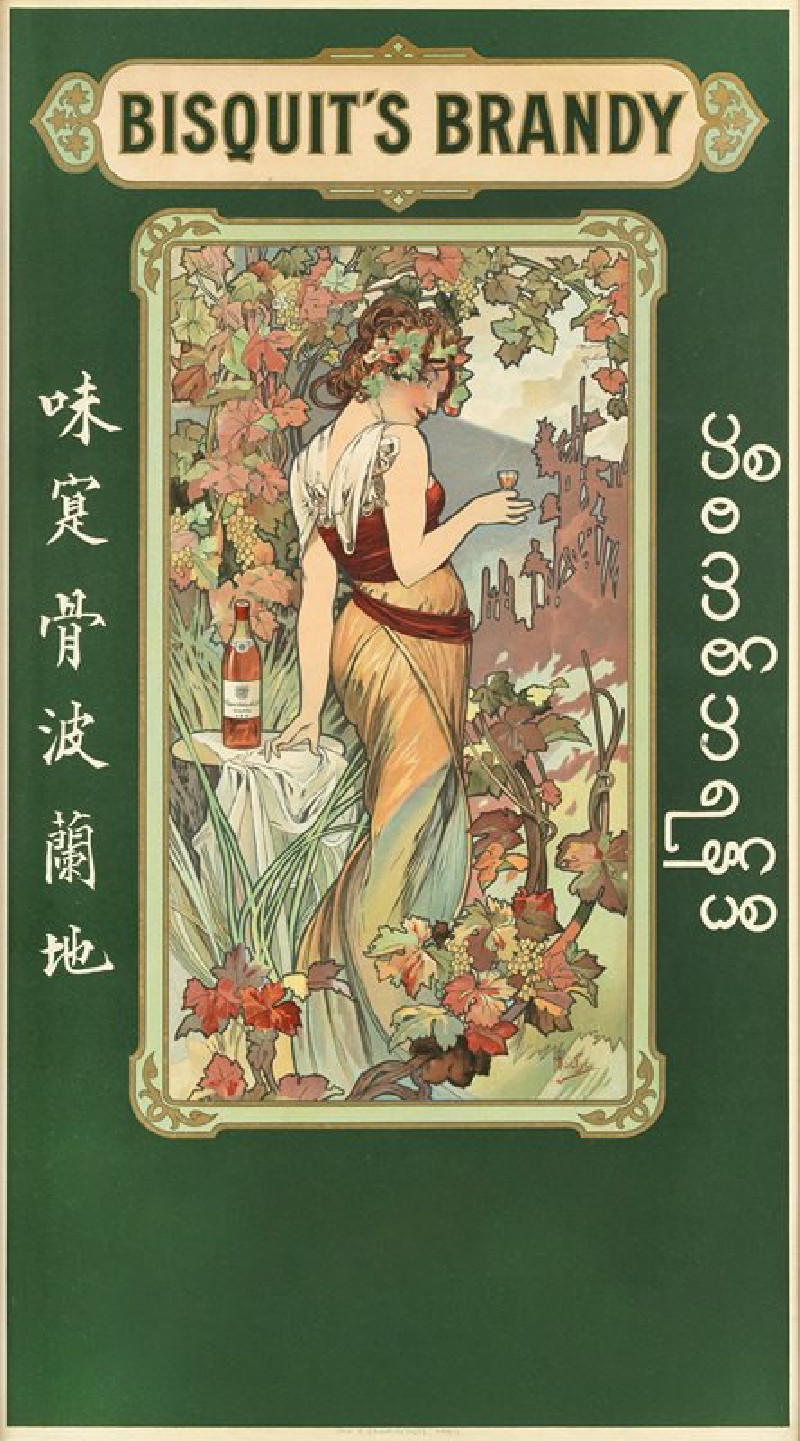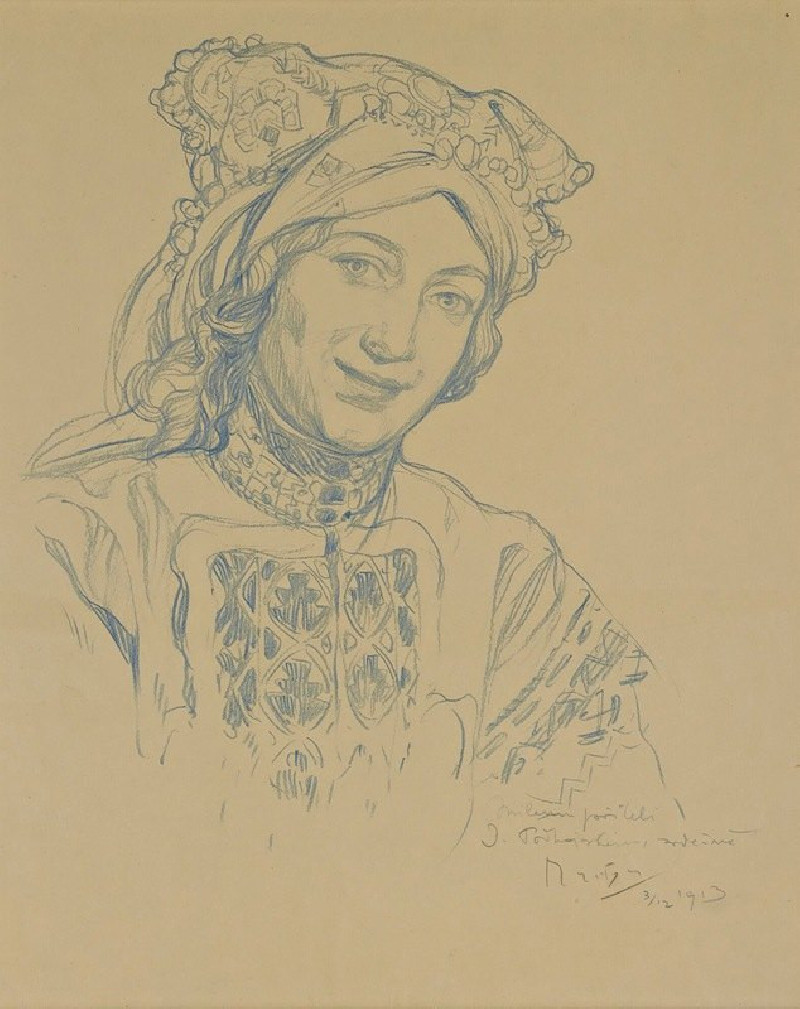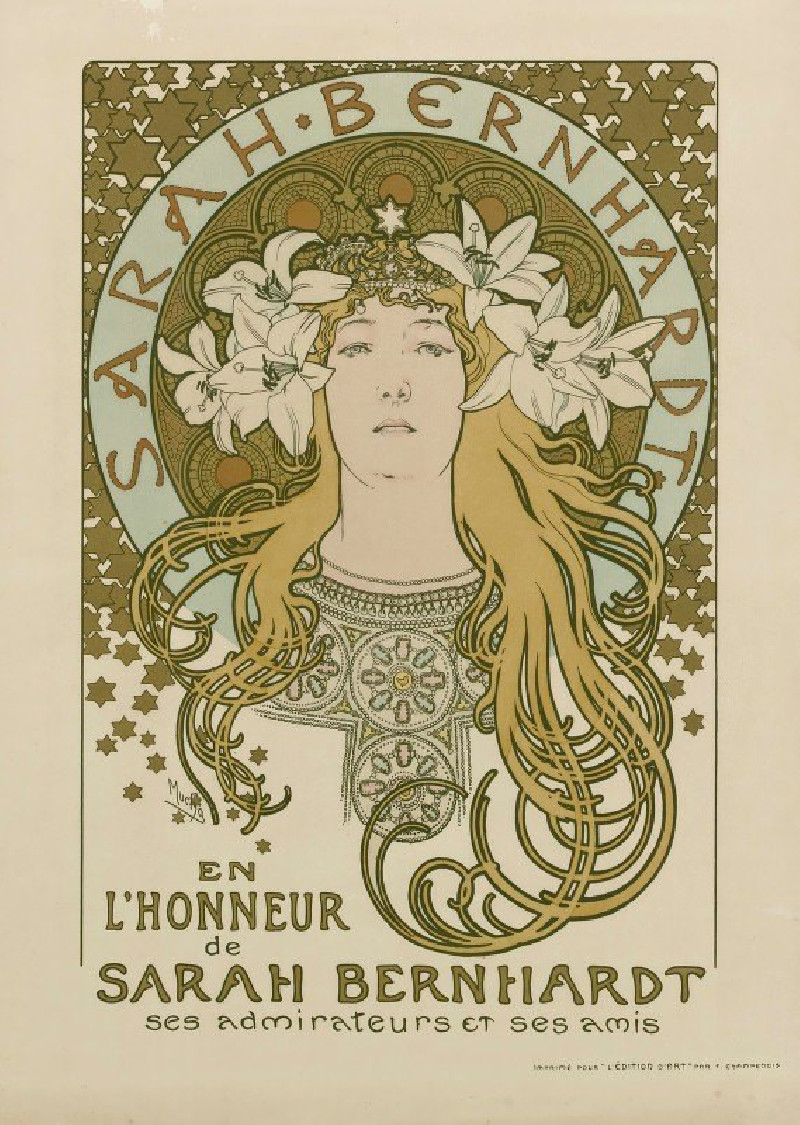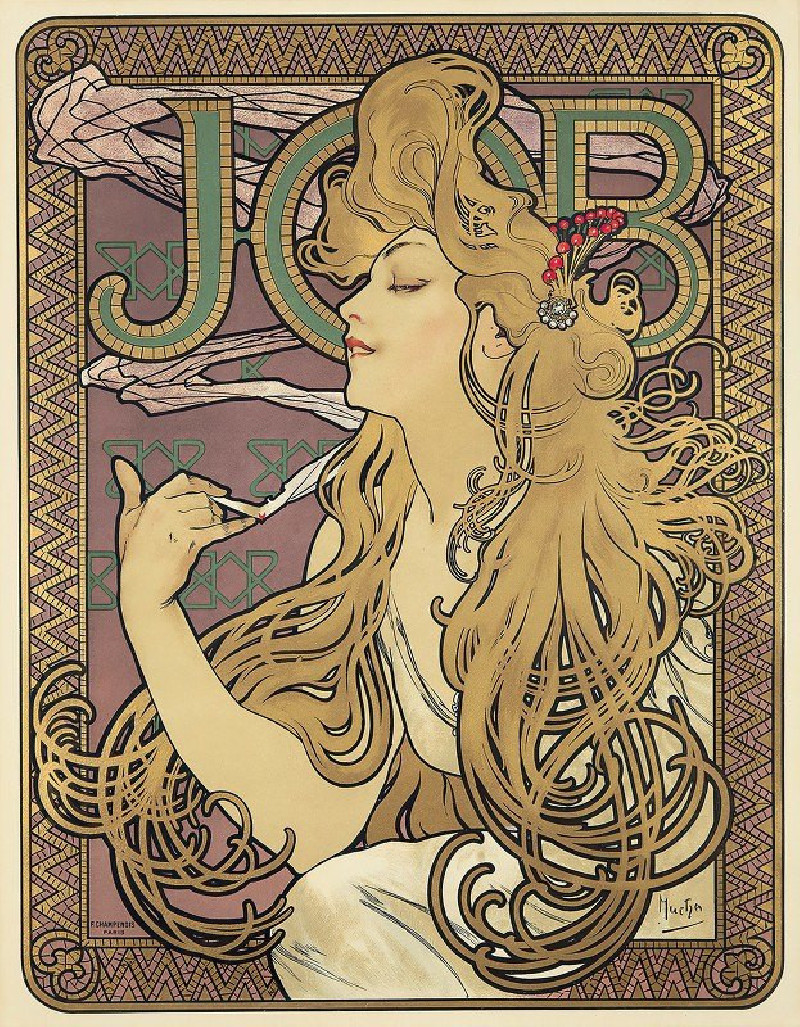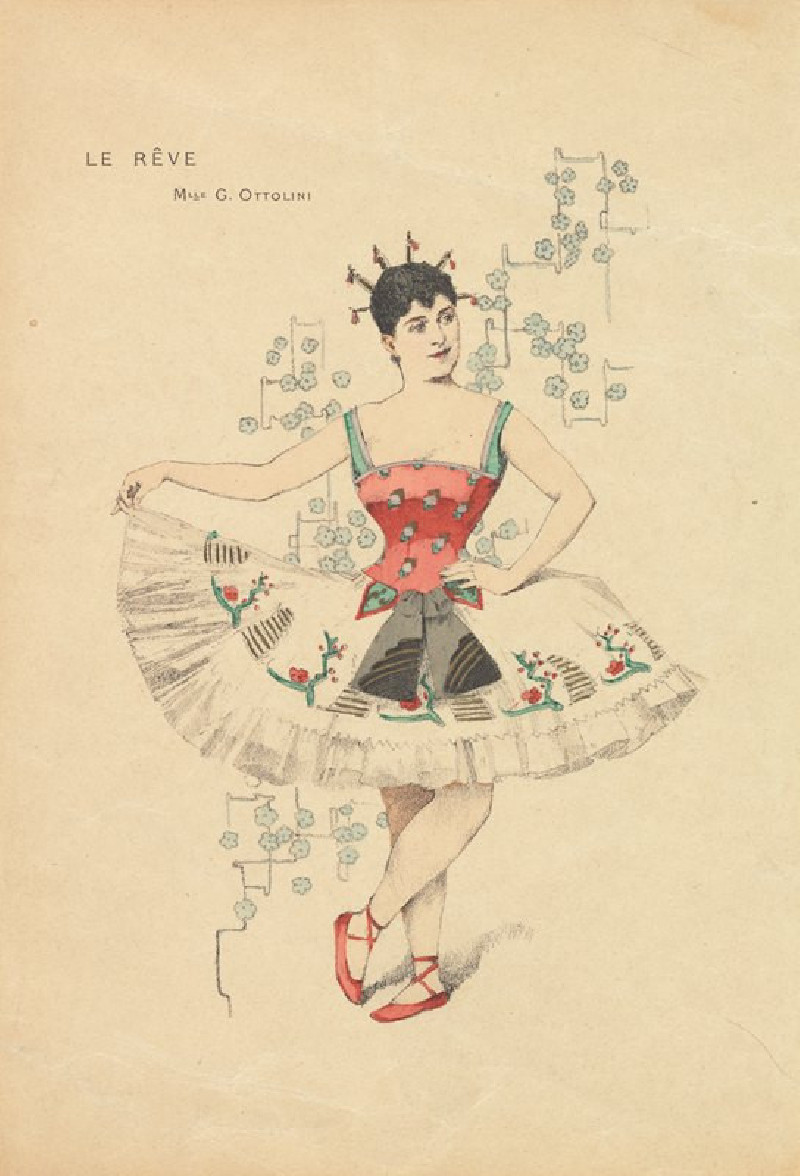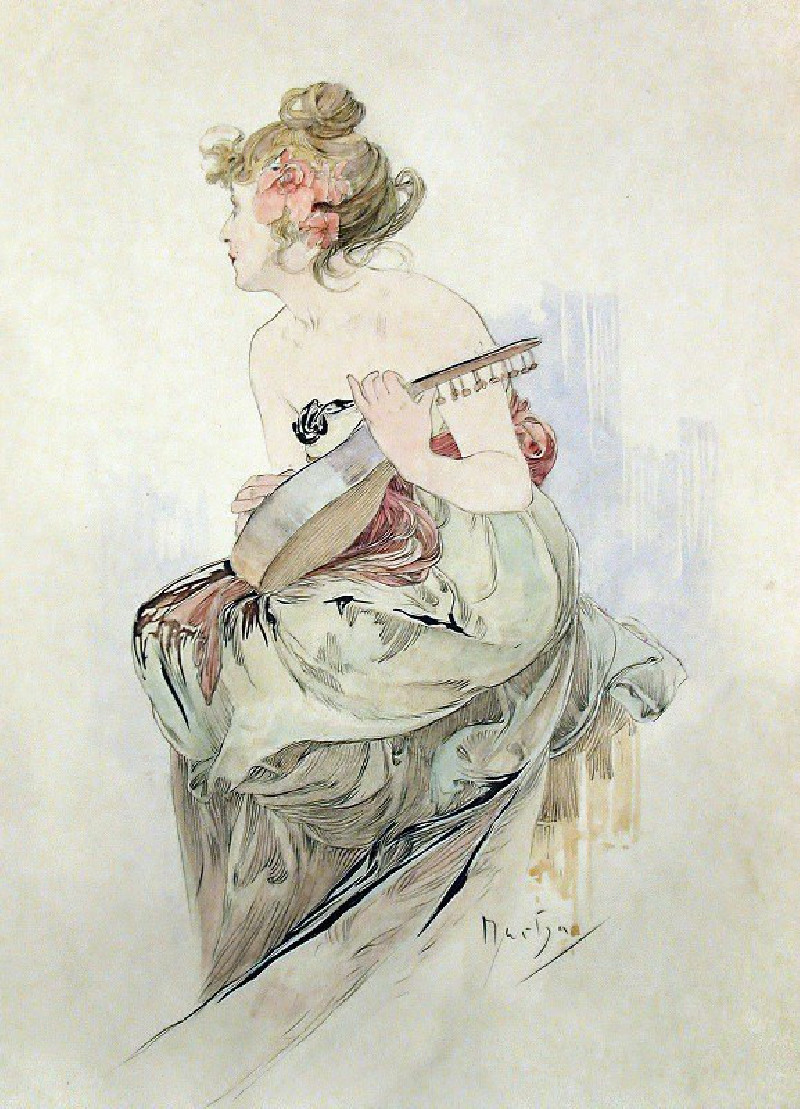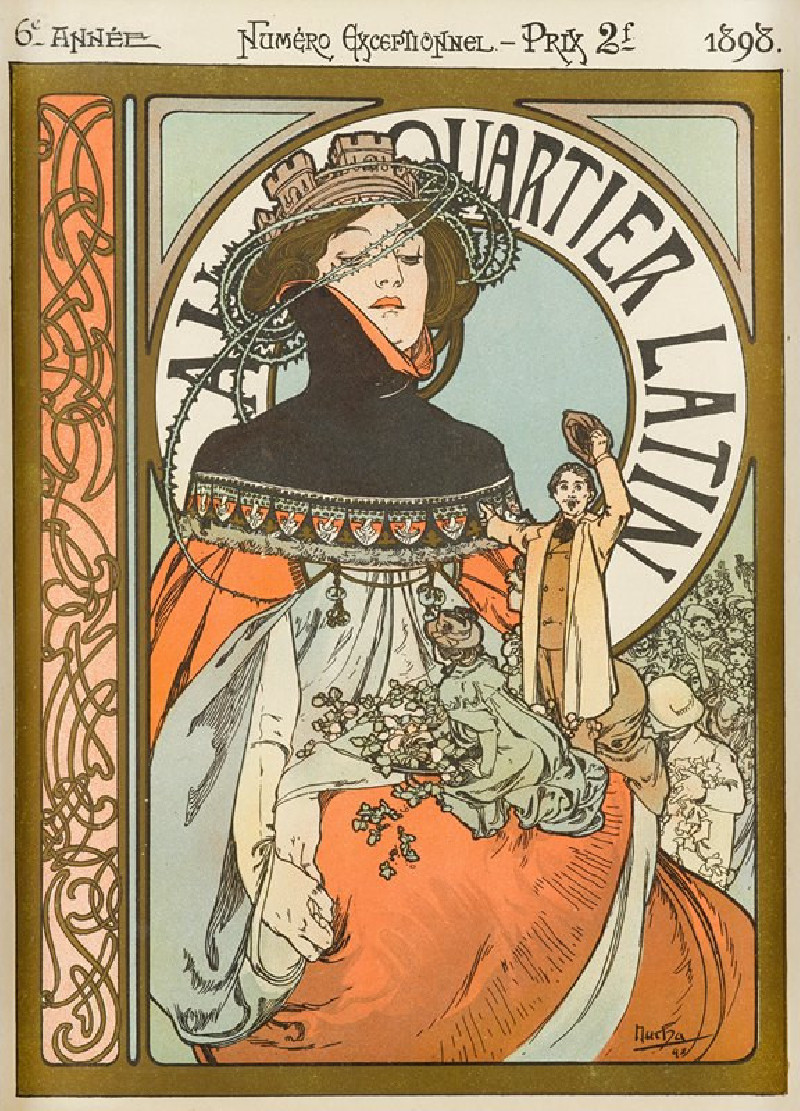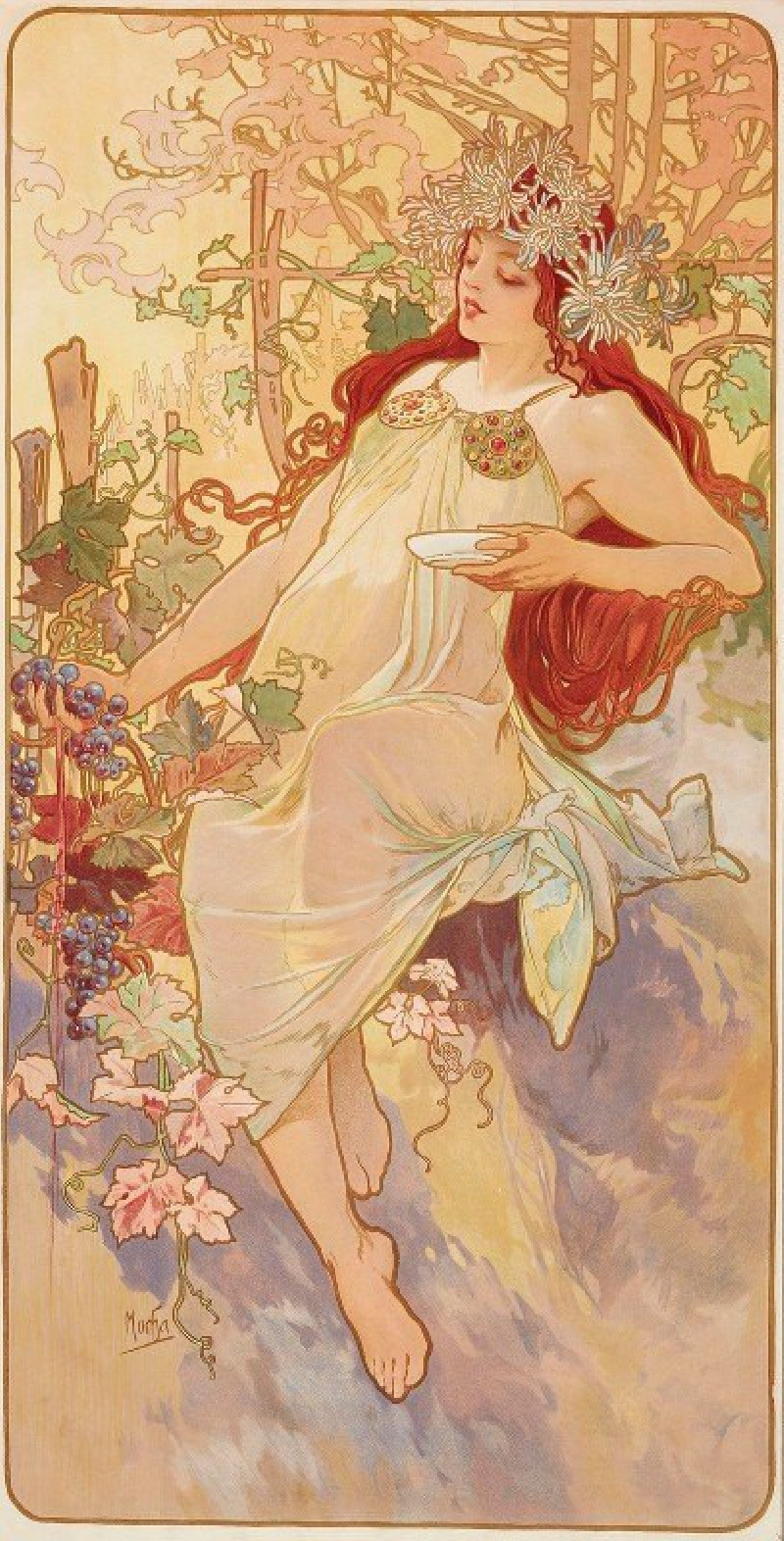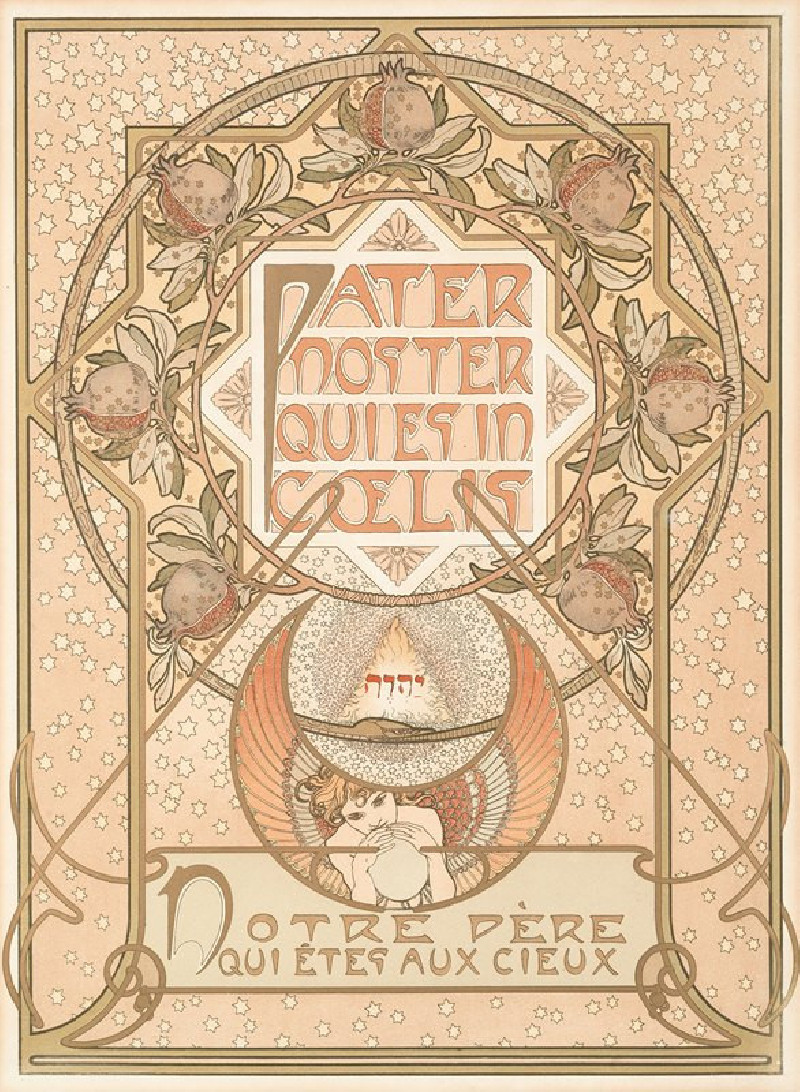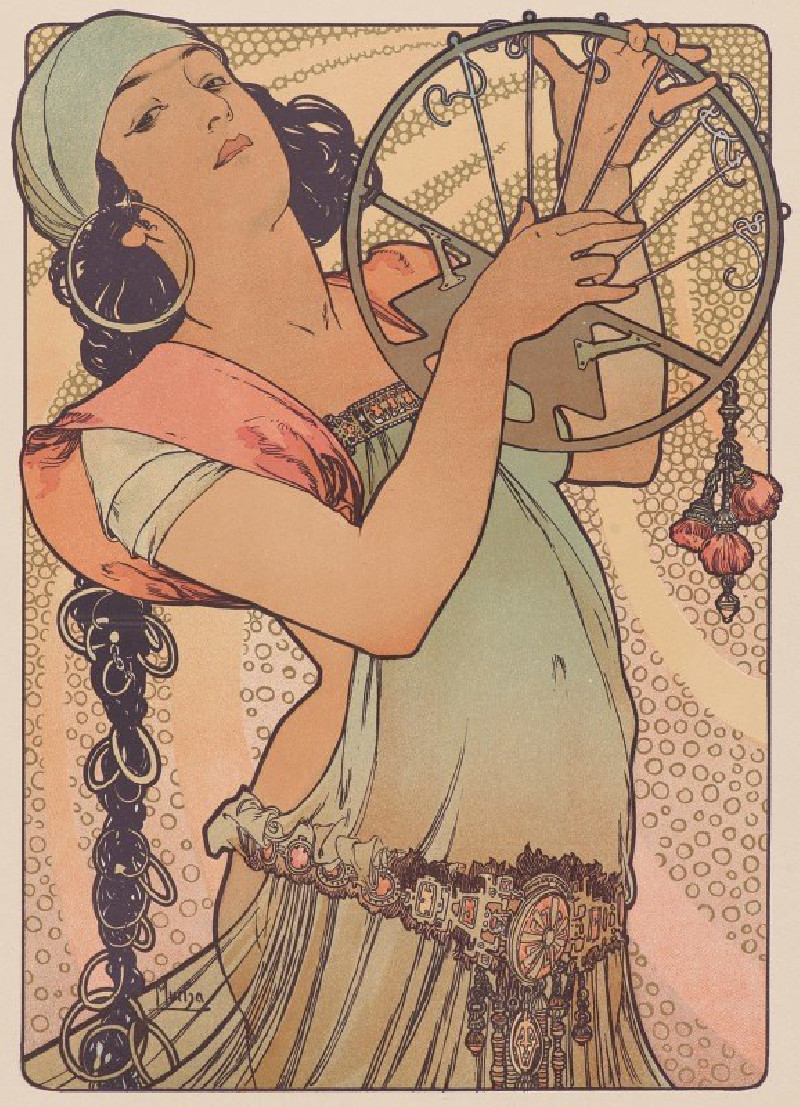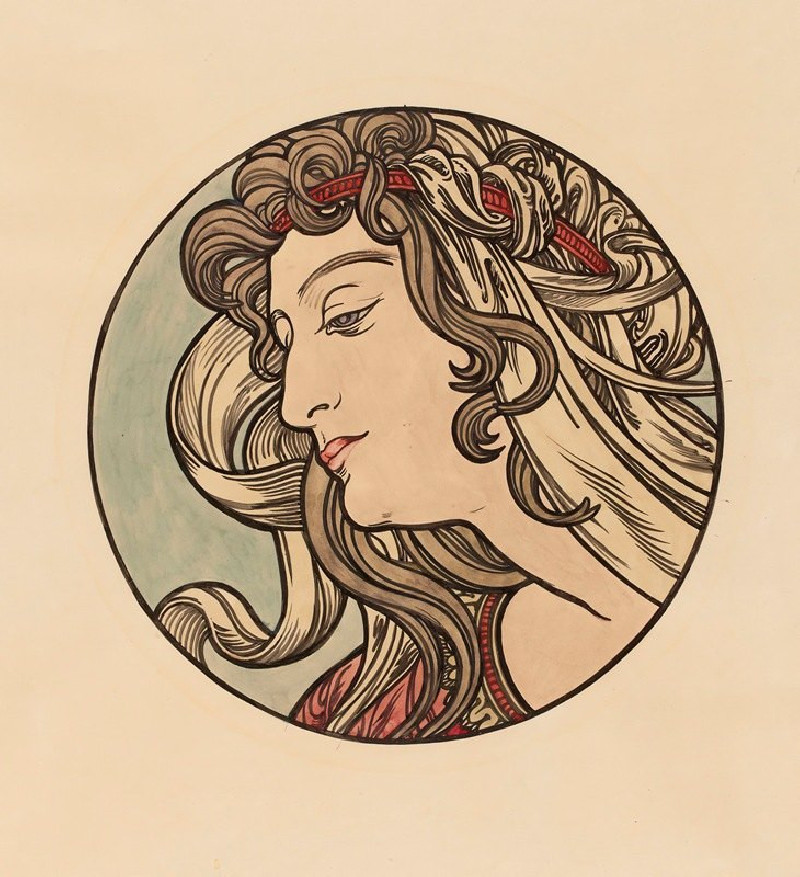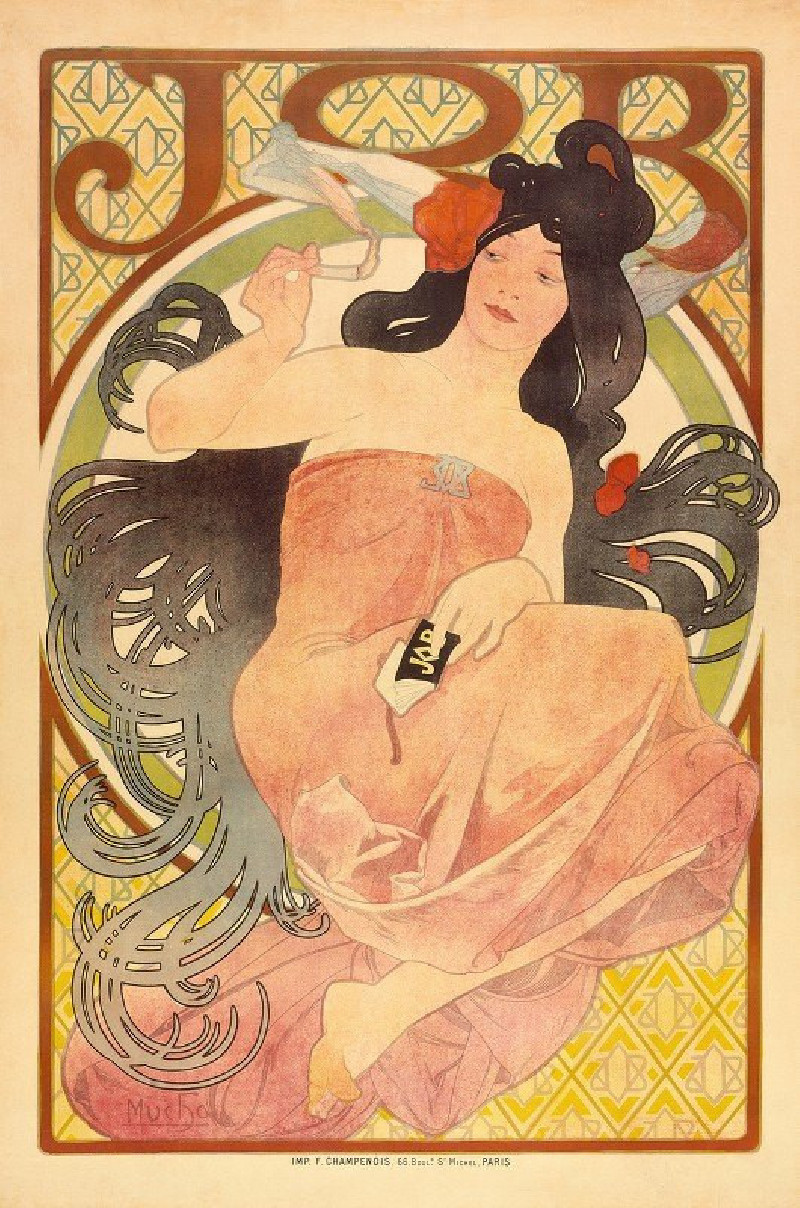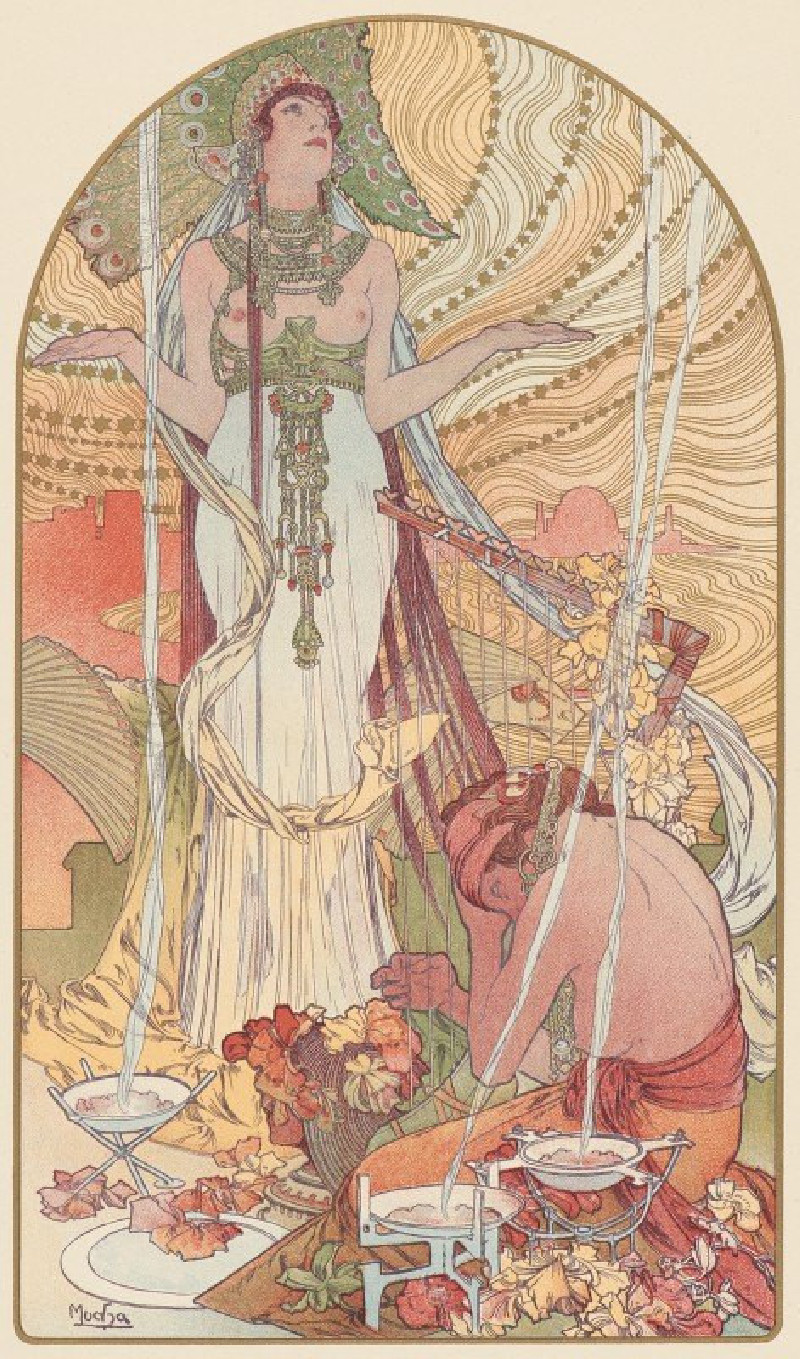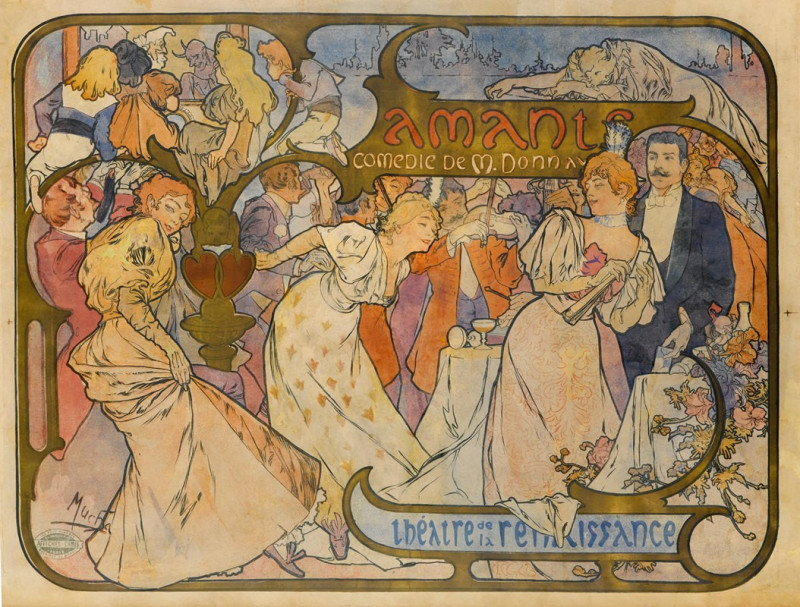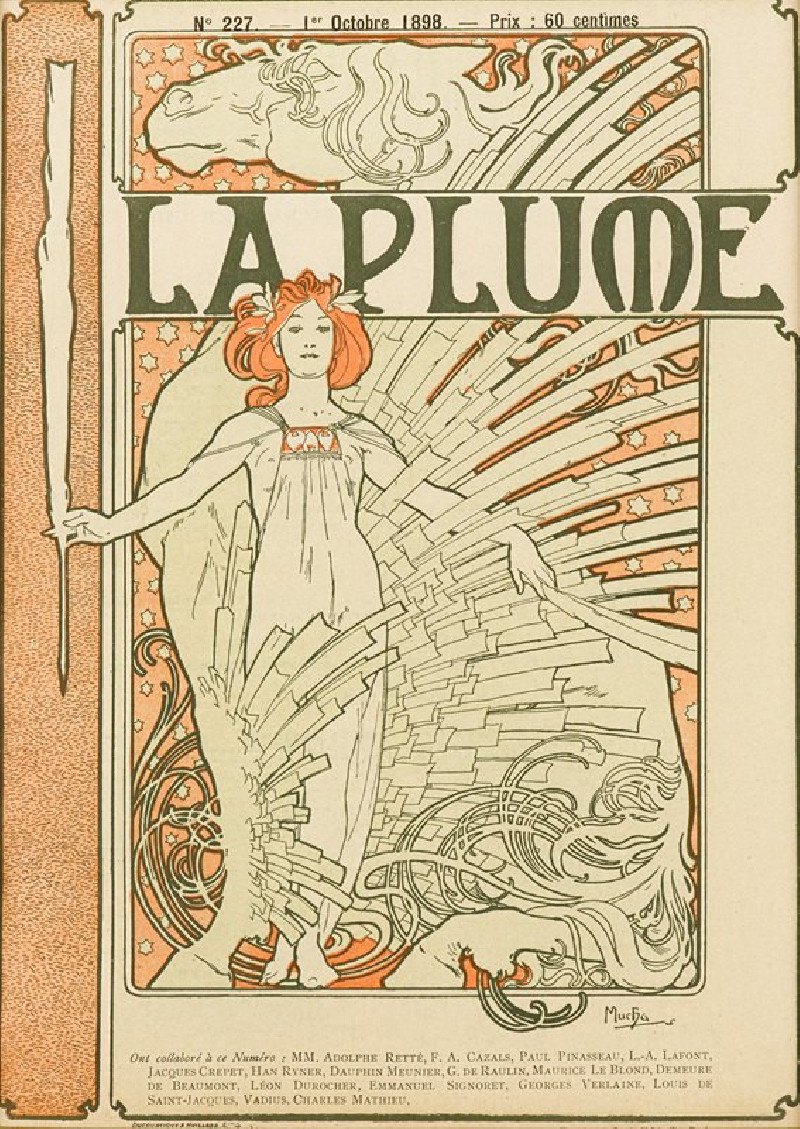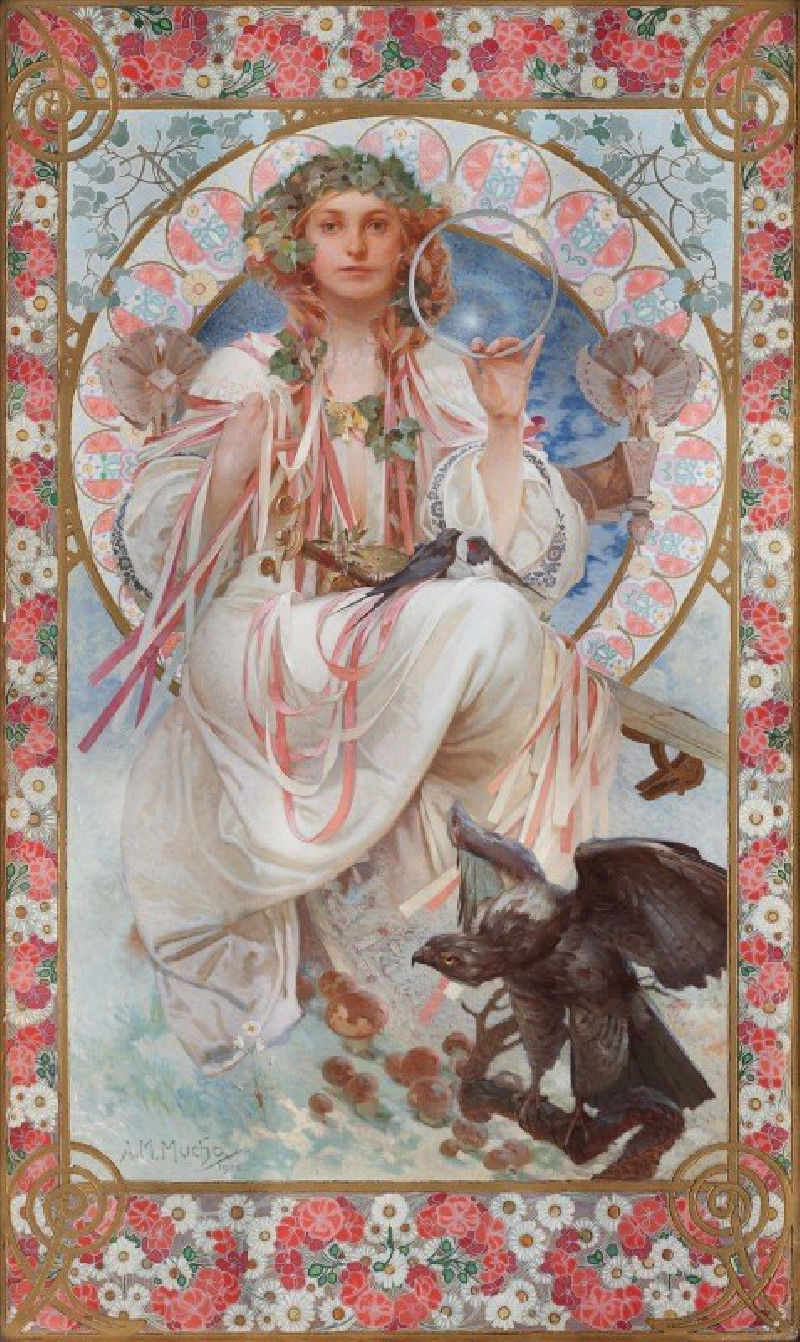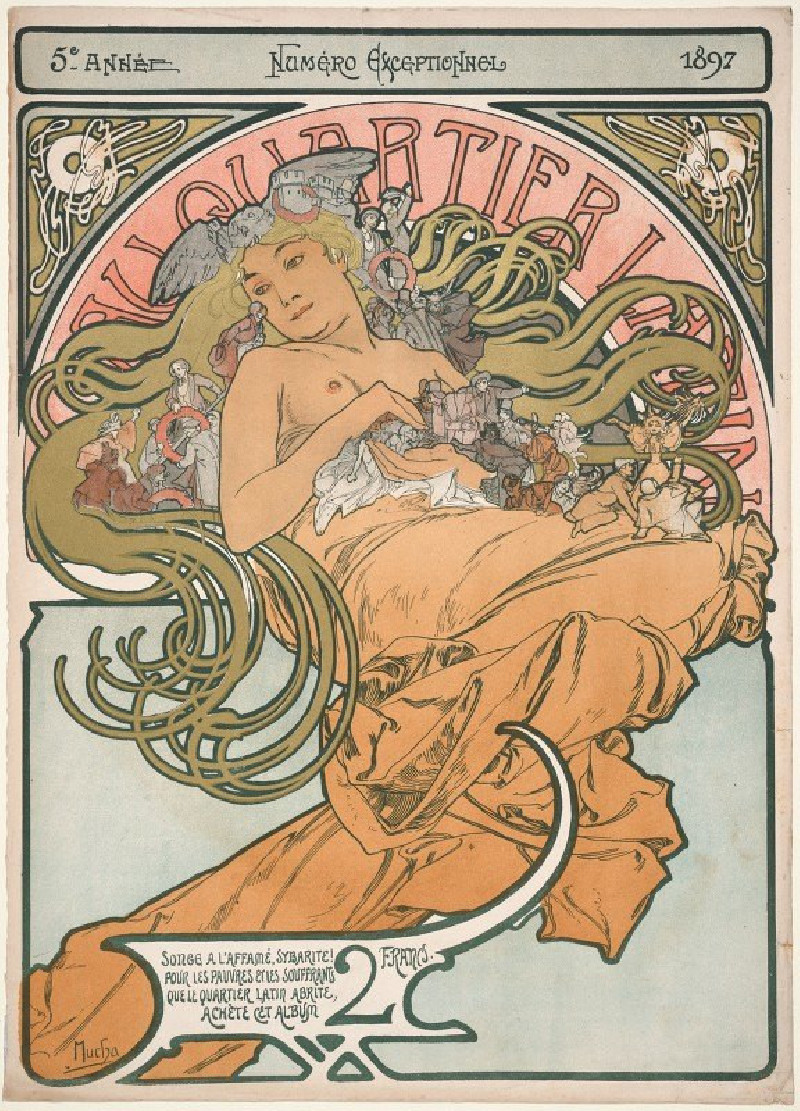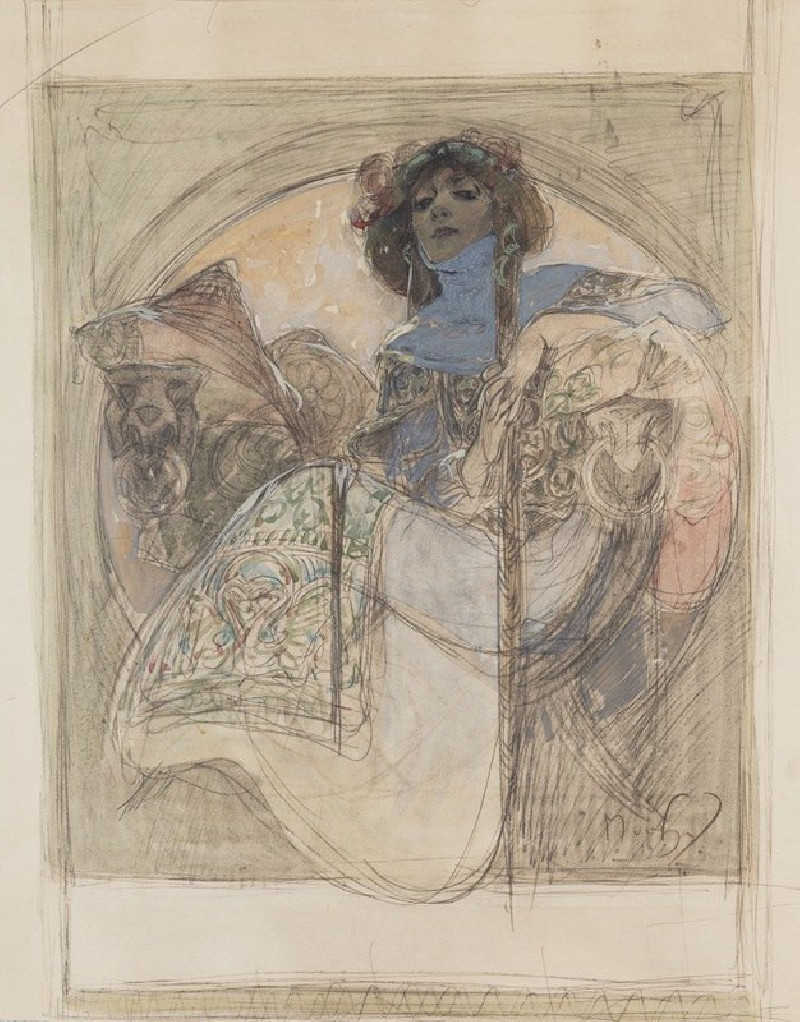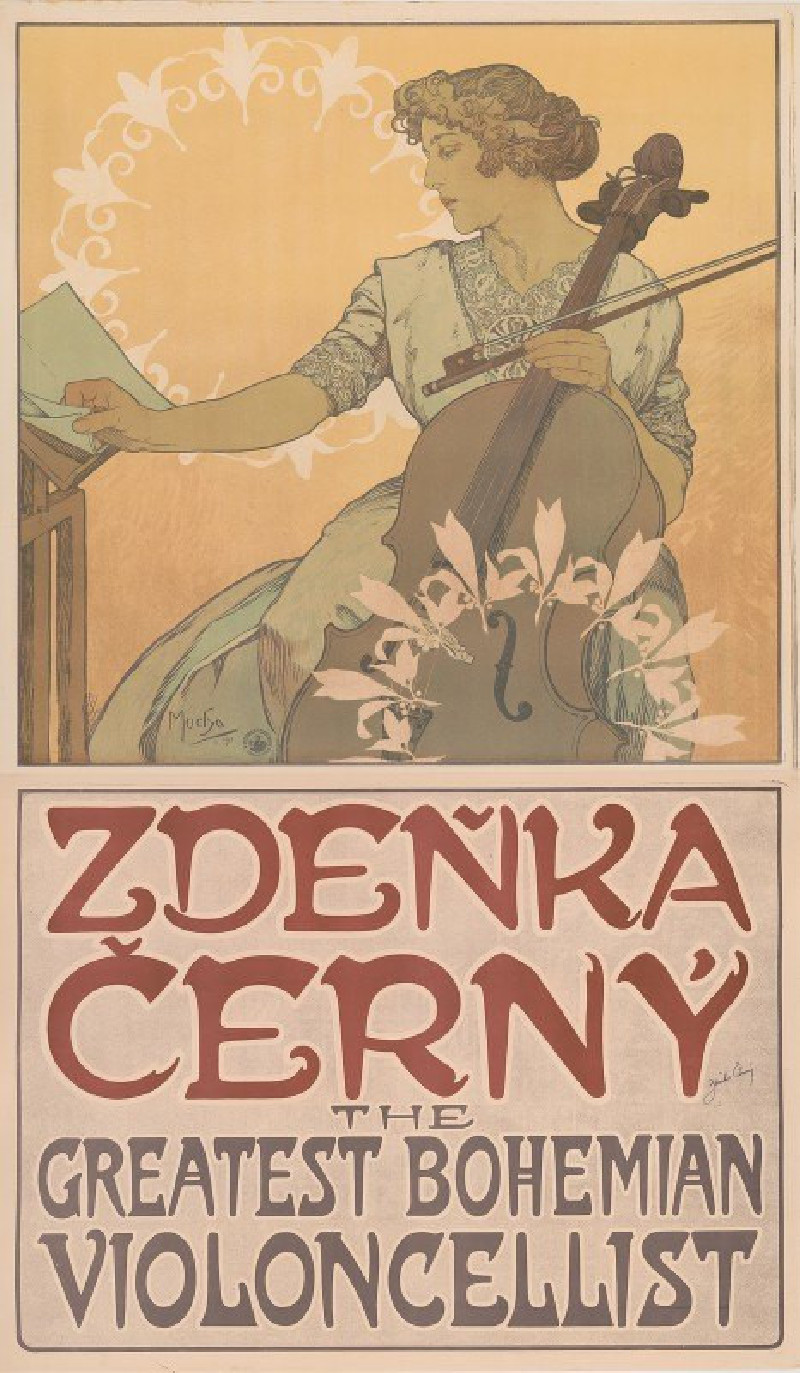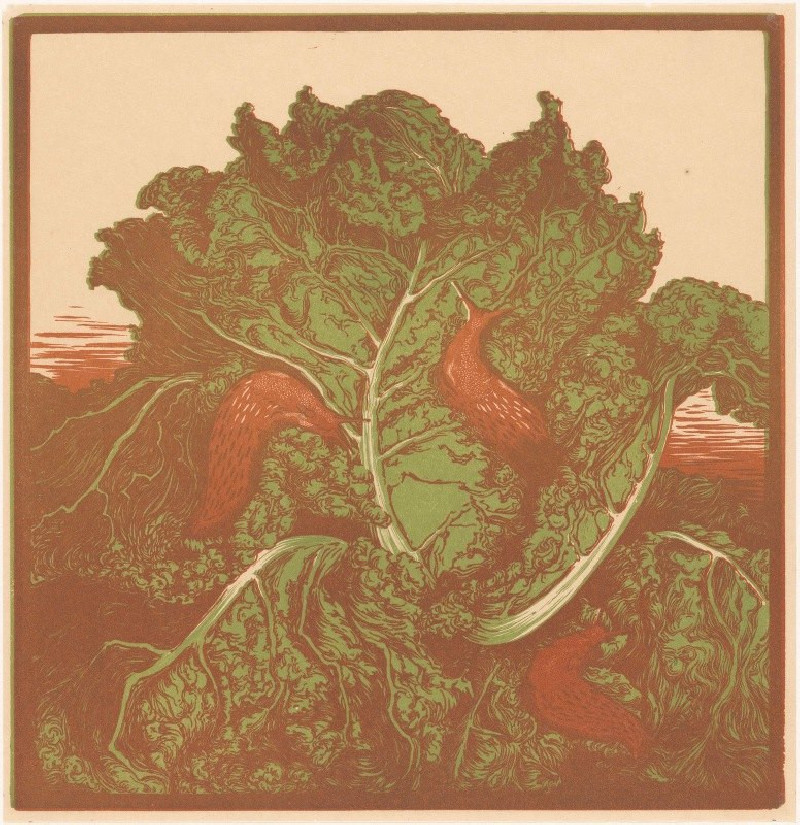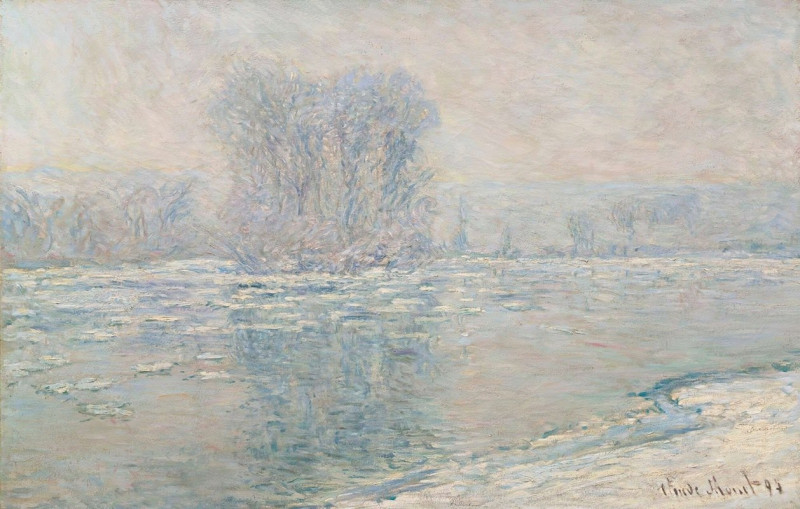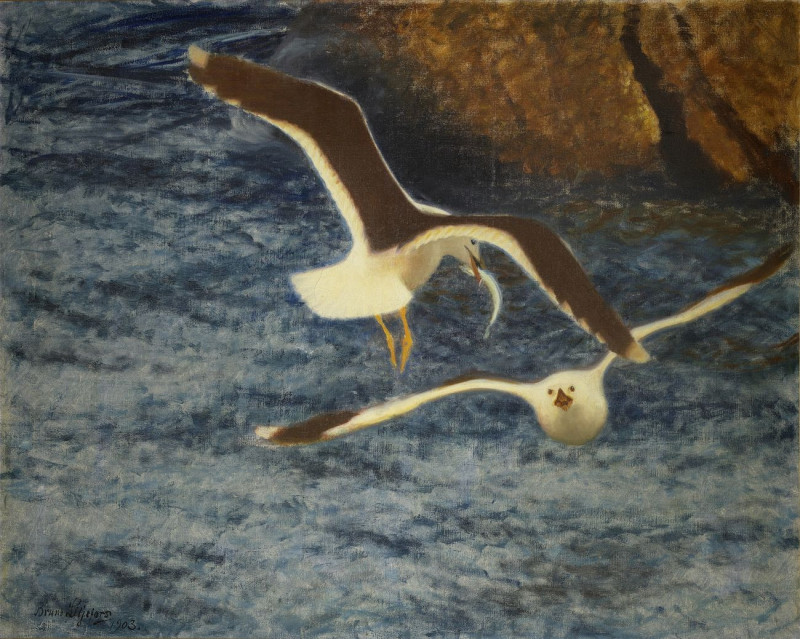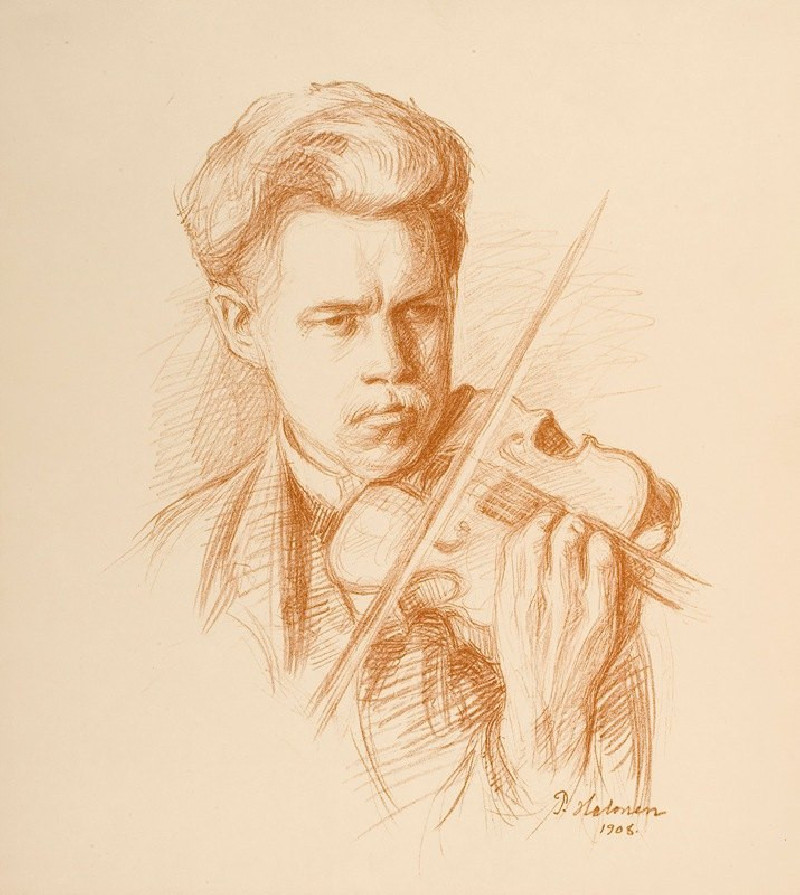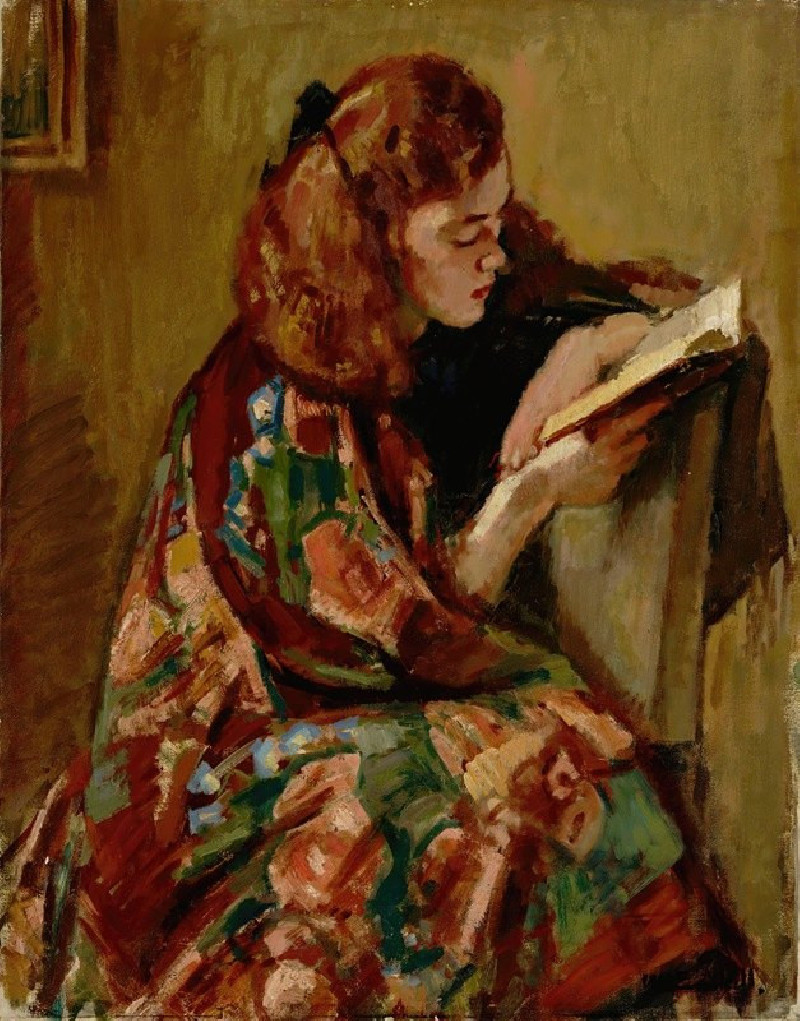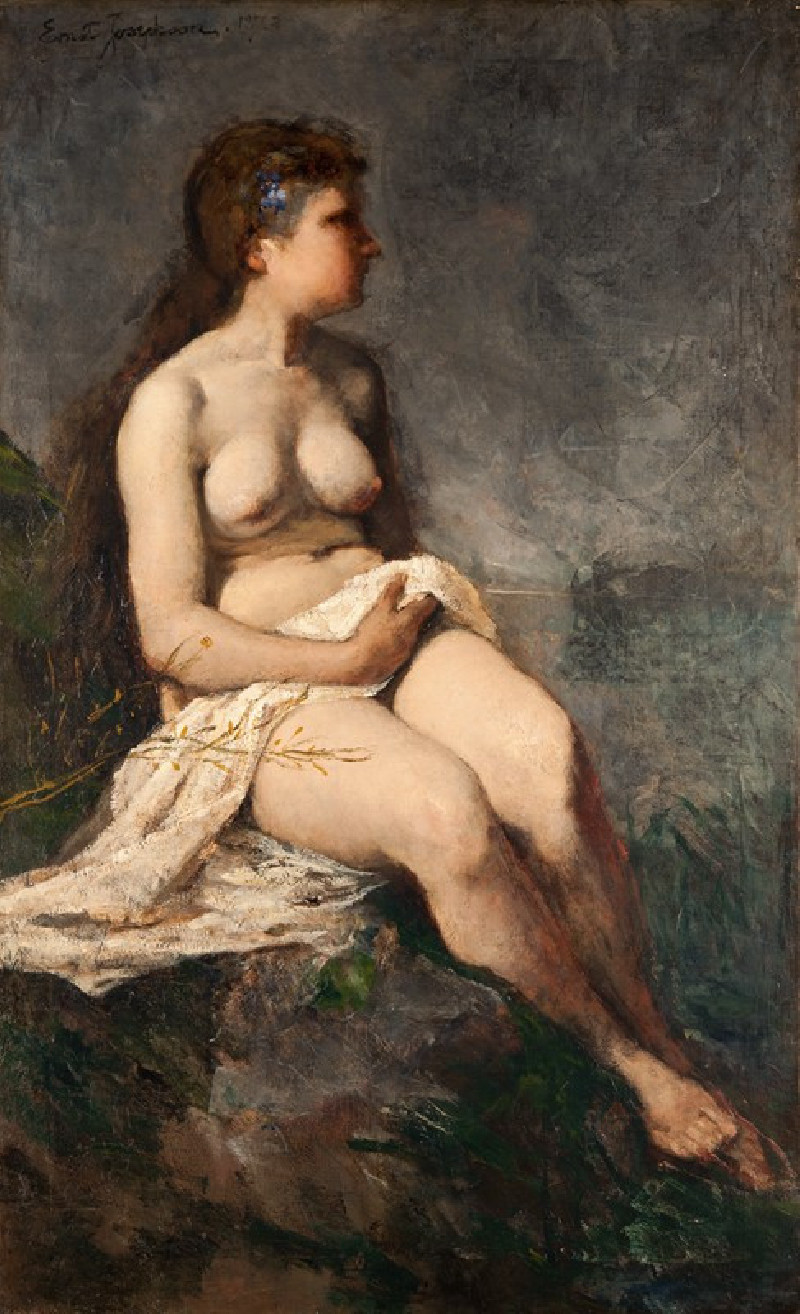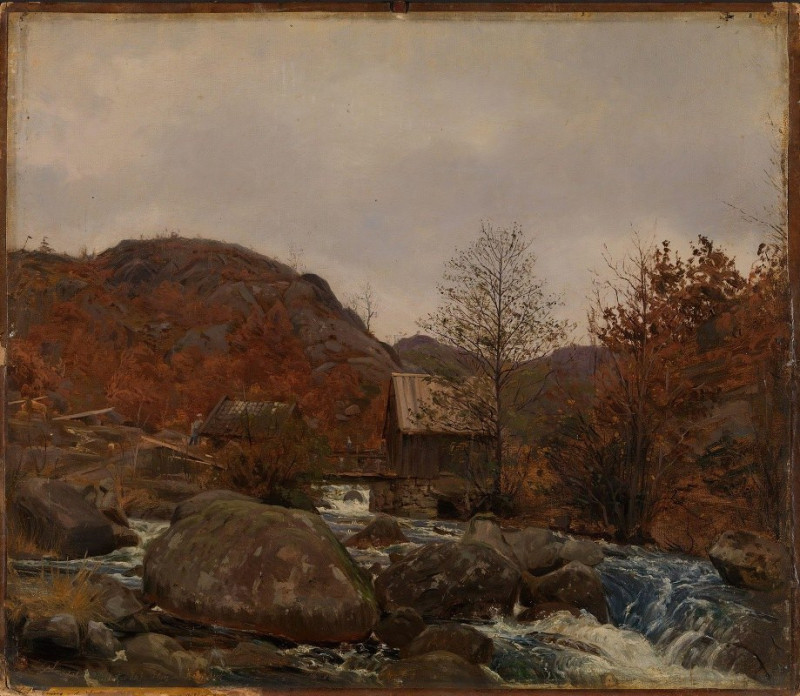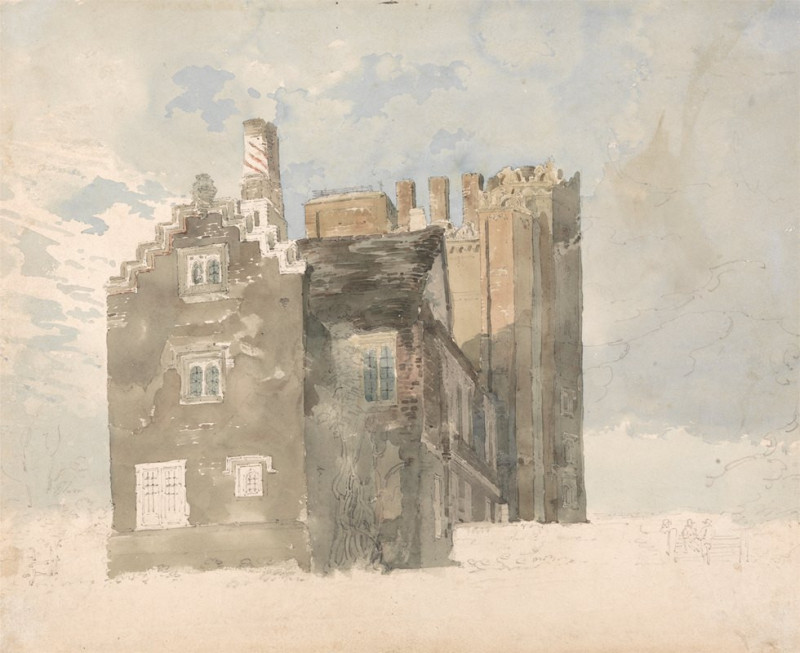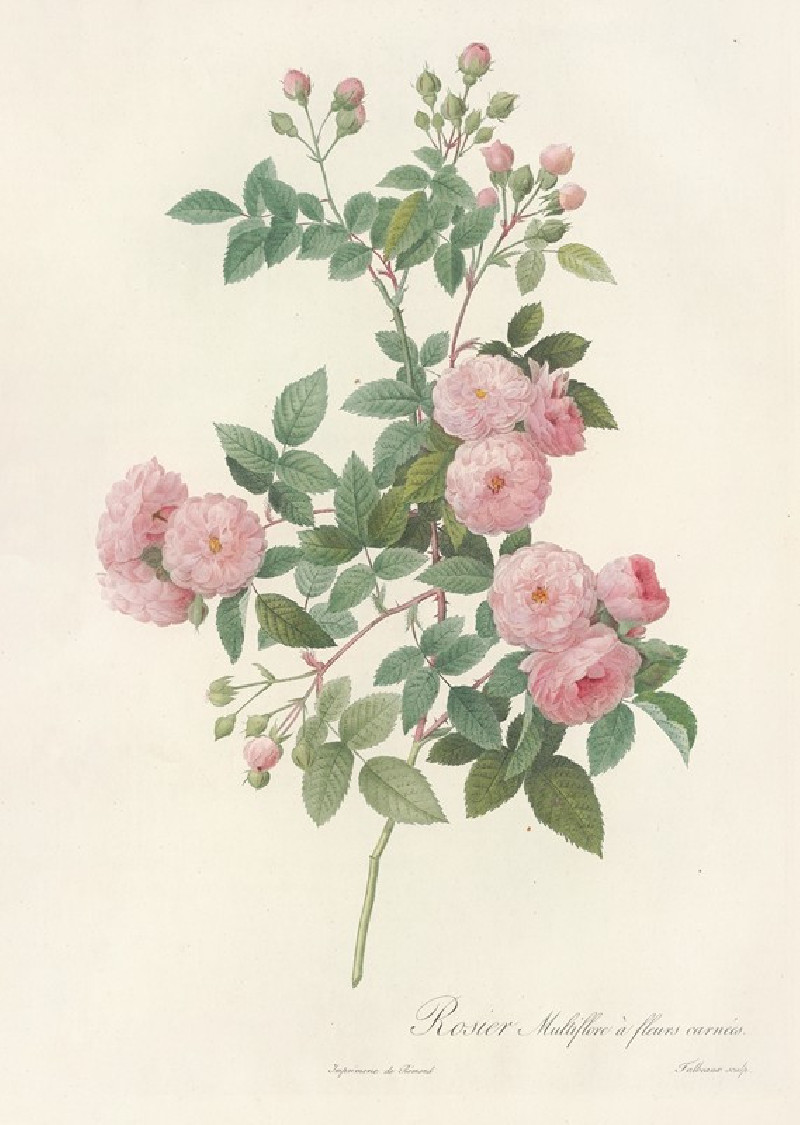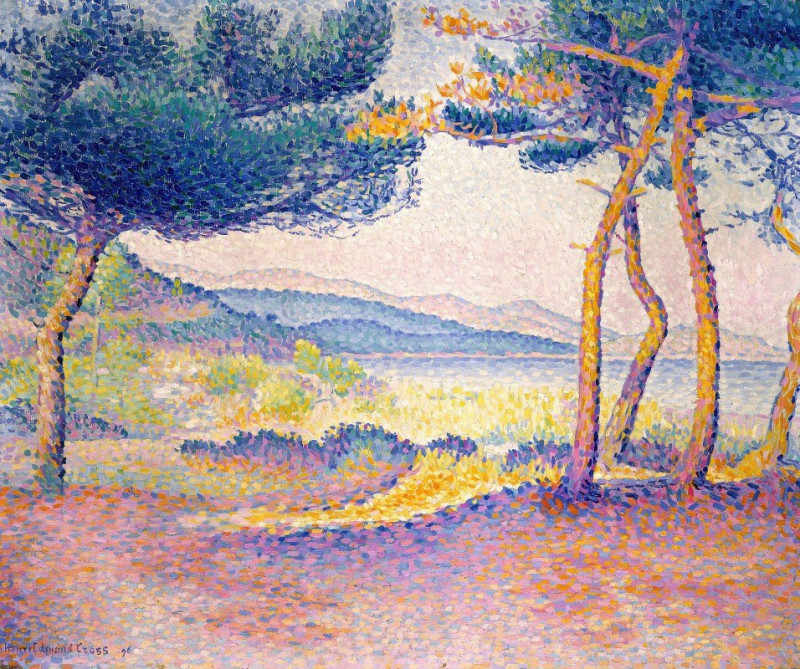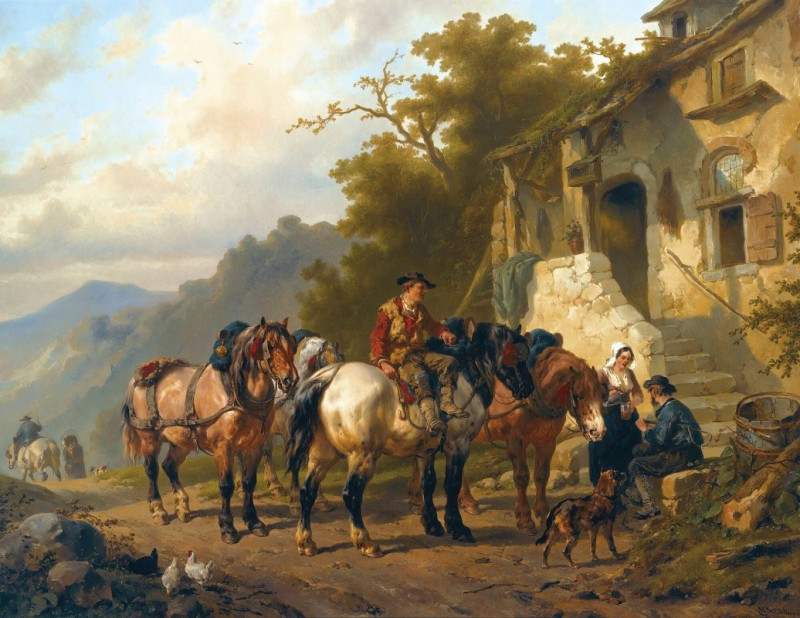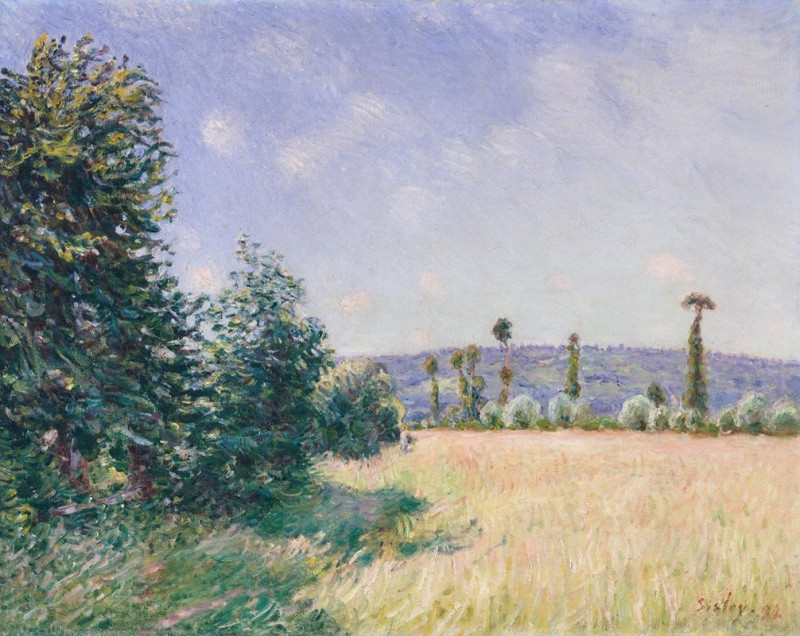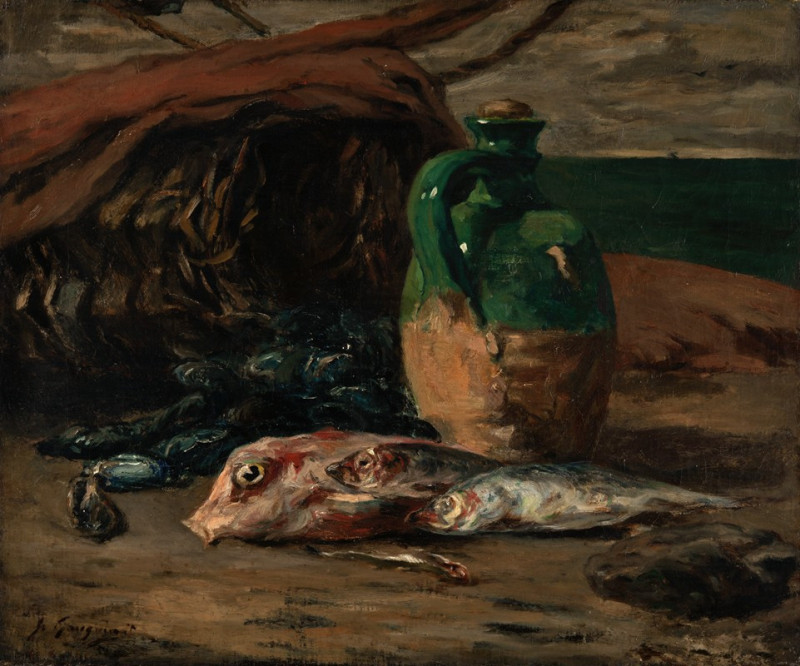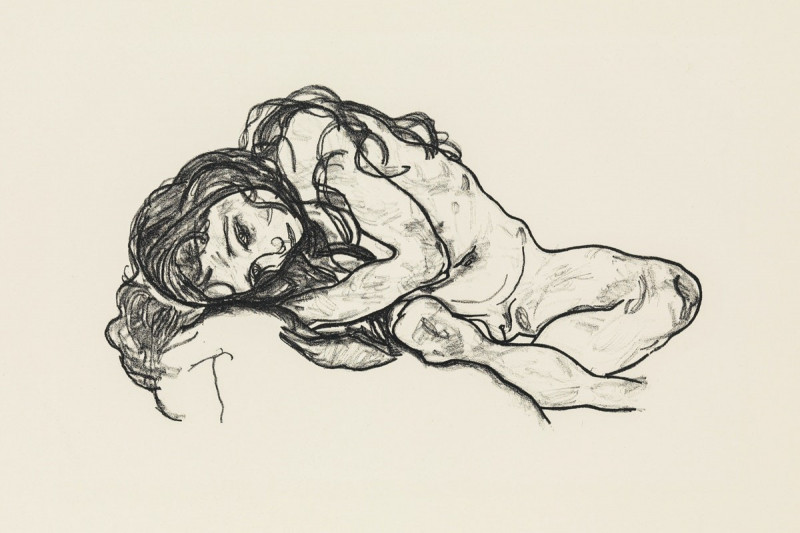Biscuits Lefèvre-Utile (1896)
Technique: Giclée quality print
Recommended by our customers
More about this artwork
This image is an advertisement designed by Alphonse Mucha in 1896 for the French biscuit company Lefèvre-Utile, commonly abbreviated as LU. Characteristic of Mucha's Art Nouveau style, the painting features an ethereal female figure, gracefully holding a plate of biscuits. The woman is adorned with a headpiece of golden leaves and vibrant red poppies, adding a sense of elegance and charm that is typical of Mucha’s work.Her flowing, diaphanous gown and the large, softly swirling hair emphasize fluidity and natural form, hallmarks of the Art Nouveau aesthetic. The background and the decorative elements, such as the intricate patterning and the stylized floral motifs, further enhance the dreamy, organic quality of the piece.At the bottom, the fan-shaped motif displays the year "1897" across its segments, likely referring to the future year when the advertisement would continue to be relevant. This choice of a fan, an object both decorative and functional, underscores the fusion of art and utility, a concept central to Art Nouveau philosophy.The name "Biscuits Lefèvre-Utile" is prominently displayed at the top, with typography that is stylized yet readable, blending seamlessly into the overall design. This advertisement not only aimed to promote the biscuits but also embodied the artistic elegance that Mucha is renowned for, making the art itself a vehicle for enhancing the product's desirability.
Delivery
Returns
Alphonse Maria Mucha also know internationally as Alphonse Mucha (1860-1939), was a Czech graphic artist, painter and illustrator. He lived in Paris during the Art Nouveau period, and is best know for his noticeably stylized and decorative theatrical posters like those of Sarah Bernhardt, the most famous actress in paris at the time. Mucha produced paintings, advertisements, book illustrations as well as designs for carpets, jewelry and theatre sets, in what was called the Mucha style. His works featured beautiful young women in neoclassical robes surrounded by flowers which formed as haloes.


